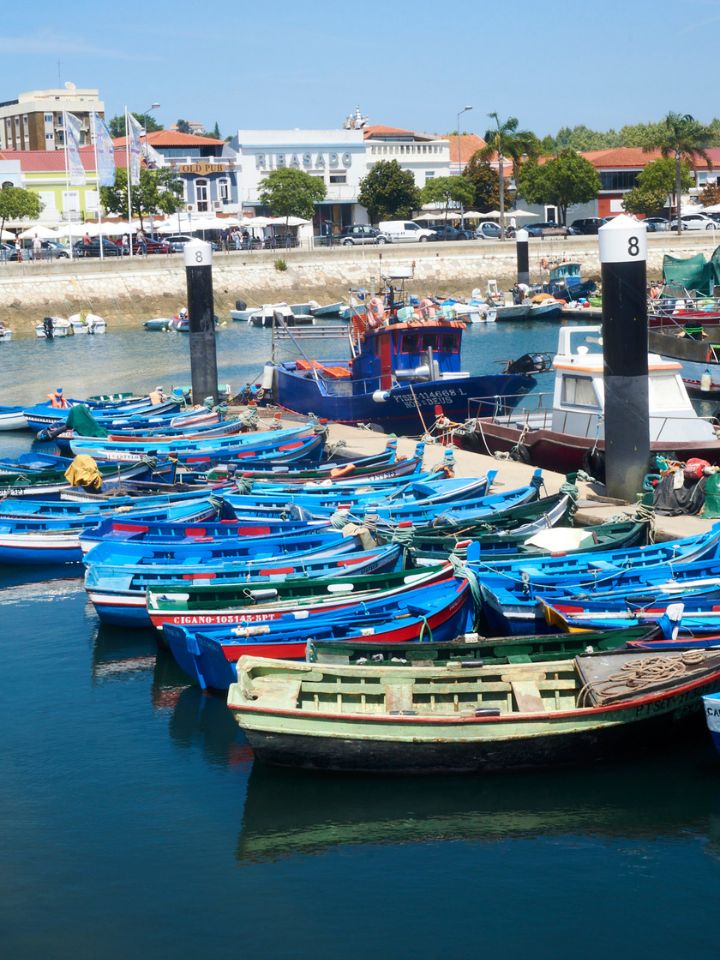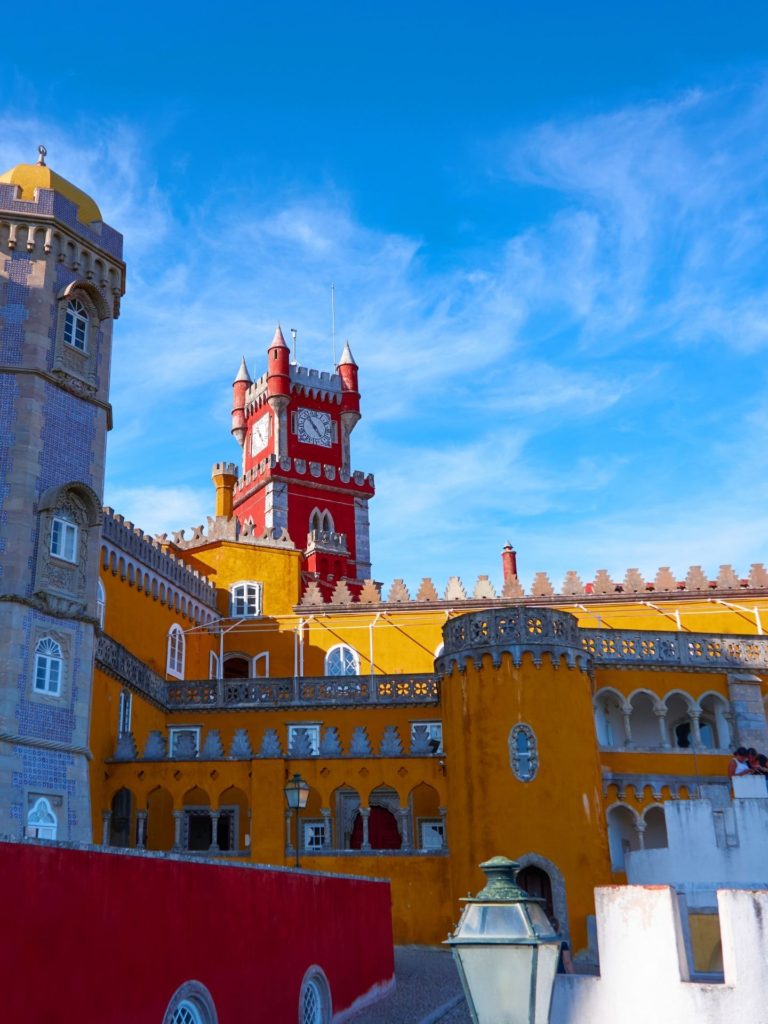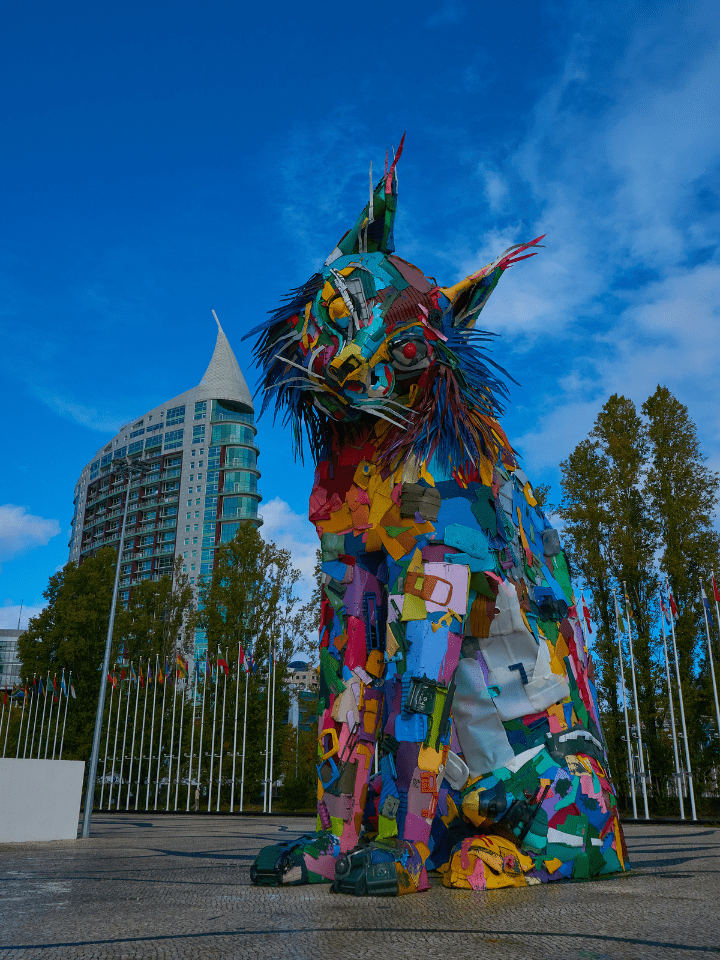
The imposing Cristo Rei, in Almada, is perhaps the most emblematic symbol of the Lisbon region. Visible in the landscape as soon as you enter Lisbon from the north, Cristo Rei attracts attention and many visitors.
This monument, whose full name is the National Sanctuary of Christ the King, consists of a shrine dedicated to the Sacred Heart of Jesus. Another great example of this type of religious monument in Portugal is the Sanctuary of the Sacred Heart of Jesus, in Viana do Castelo.
Inspired by Brazil's Christ the Redeemer, Cristo Rei was built in 1959. The idea came from two distinct moments. The first originated in 1934 when the then Cardinal of Lisbon visited Christ the Redeemer and was fascinated by its magnificence. However, it wasn't until World War II, and Portugal's desire not to participate, that a promise was made that if Christ spared Portugal from participating, a monument would be erected in his honor. Thus, Christ the King we know today was born - sculpted on the very site where it stands today and using around 40,000 tons of concrete, in a process that lasted 10 years. The inauguration took place in front of the image of Our Lady of Fátima, who watched as the promise was fulfilled.


Christ the King stands 215m above sea level, 110m high.
In total, it's 110m high, only 28m of which is the statue itself and the remaining 82m the pedestal. In addition, its open arms also measure 28m. To give you an idea of its magnificence, the statue's heart alone measures 1.89m.
Located in Almada, on the opposite side of the River Tagus, the very park where it is erected is already considered a good view, but it is at the top of the pedestal, at the foot of Cristo Rei, that the view is breathtaking.
The park is free to enter, but is open from 10am to 7pm. In the park there are several statues of a religious nature, especially the statues that seem to communicate with Christ the King.

Besides the breathtaking view, there is also a large green area where you can relax and spend some time. There is also a café and a souvenir store.
Take the opportunity to walk around the pillars of the monument and appreciate the various panels and decorated doors that surround it.

visit Christ the King
Visiting the monument was no easy task for us. The queue was long and moved very slowly - by our reckoning, about 12 people came and went every 5 minutes - bear in mind that, despite the timetable, they can close the queue early because they don't think they can get all the people in before closing time. A entry costs 8€ and ATMs are not accepted, so payment must be made in cash at the time of entry.
Right at the entrance, there is a room in gratitude to Pope Benedict XVI. However, at the time of our visit (2023), this room was being completely refurbished, so we were unable to access it.
The visit begins with an elevator ride that lasts just a few minutes and takes you up a narrow staircase. Here you start to climb in a line to the top of the 59 steps that make up this narrow path. Consequently, the climb is not recommended for people with reduced mobility.
At the end of the climb, we enter the level where we can visit Christ the King, and thus at his feet. Currently, the ascent works in a circuit. In other words, you go up the stairs to the top level and are then taken to the foot of the statue, and it's only when you return to the elevator area that you have access to the souvenir store and the Chapel.
The statue viewpointat 84m high, is very beautiful. Here we are offered a 360º view of Lisbon, the beautiful 25 de Abril bridge, the two banks of the River Tagus and everything visible within a radius of more than 25 km, including various monuments and, on good days, Sintra. At the foot of the statue is a large tile panel.


Walking around the statue and after enjoying the view it offers, we followed the staircase that leads back to the elevator. Before going down, we recommend you take a look at the small Chapel of the Confidants of the Sacred Heart of Jesus. This chapel is made up of a collection of sacred art full of symbolism that adorns its altars.
Once you've seen the chapel, you'll have to rejoin the queue that will take you up the same narrow staircase back to the elevator. As with the entrance, about 12 people go up and down at a time, so you may have to wait for a group to finish going up or down.
how to get there and where to park
Cristo Rei can be visited by car or ferry.
To use the ferry, simply go to the Cais do Sodré River Station and take the boat to Cacilhas. Ferries usually leave every 15 minutes and the journey takes about 10 minutes. A ticket for the Cacilhas - Cais do Sodré connection currently (2023) costs €1.40 + €0.50 for the card if you don't already have one. Bear in mind that from here you'll have to rent a TVDE, take the bus or walk about 30m, so it's not the most practical option.
Another way to visit the monument is by car. The road itself is very simple, with a cut-off after the 25 de Abril Bridge. At the time of our visit (2023), this area was under construction, so traffic may have been diverted and / or may not have corresponded with the GPS, but you can easily reach the statue and the detour were duly identified.
The very park where Cristo Rei is located has a parking lot (on dirt) which is free to access and use. The parking lot is quite large, so you shouldn't have a problem. If the parking lot is full, there is plenty of space on the access road, so this shouldn't be a problem.
That said, Cristo Rei is a magnificent and imposing sight. As a result, we highly recommend that you visit the park, enjoy this incredible space and the view it offers free of charge. Although going up to the monument is an interesting experience with equally beautiful views, we thought the price charged (8€ / person) was a bit expensive for the associated waiting time and the visit itself.




